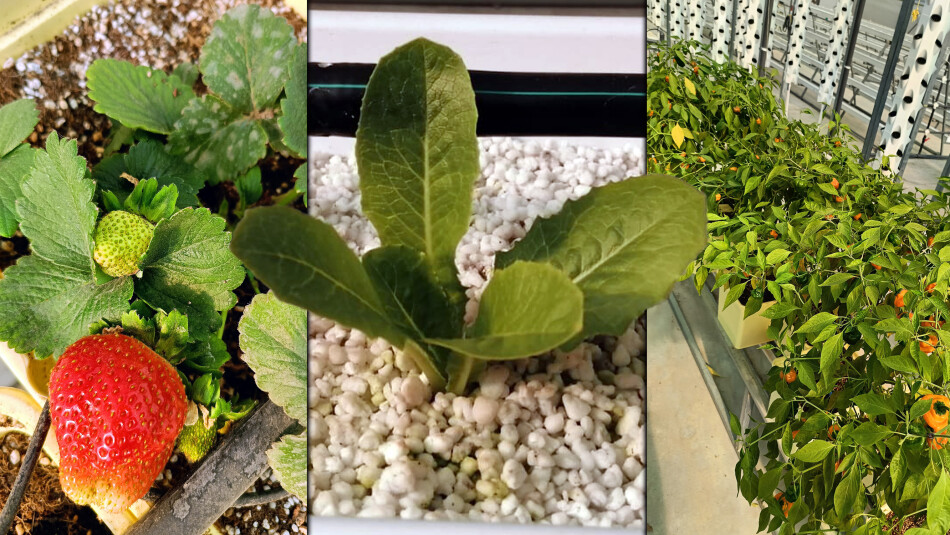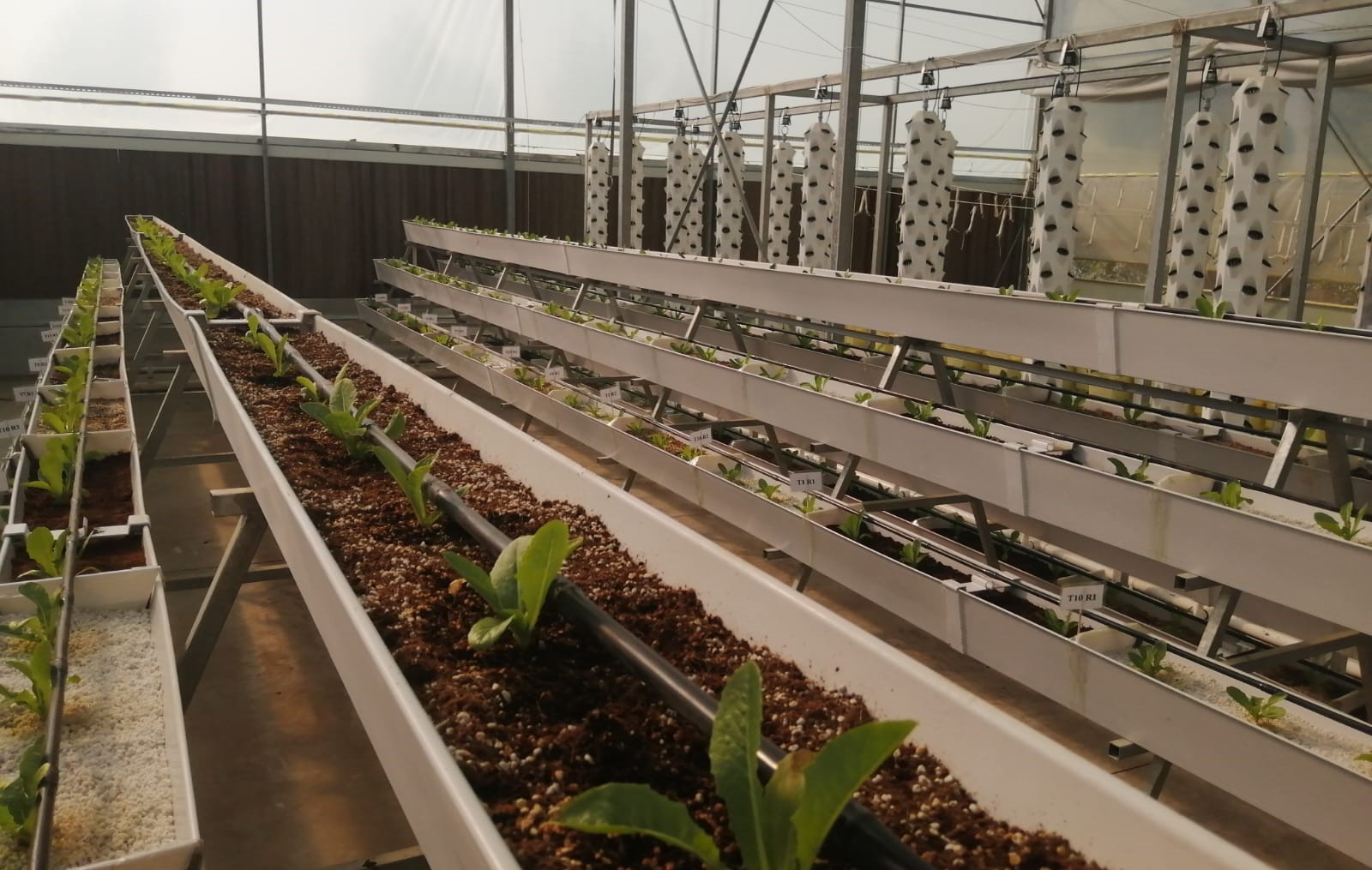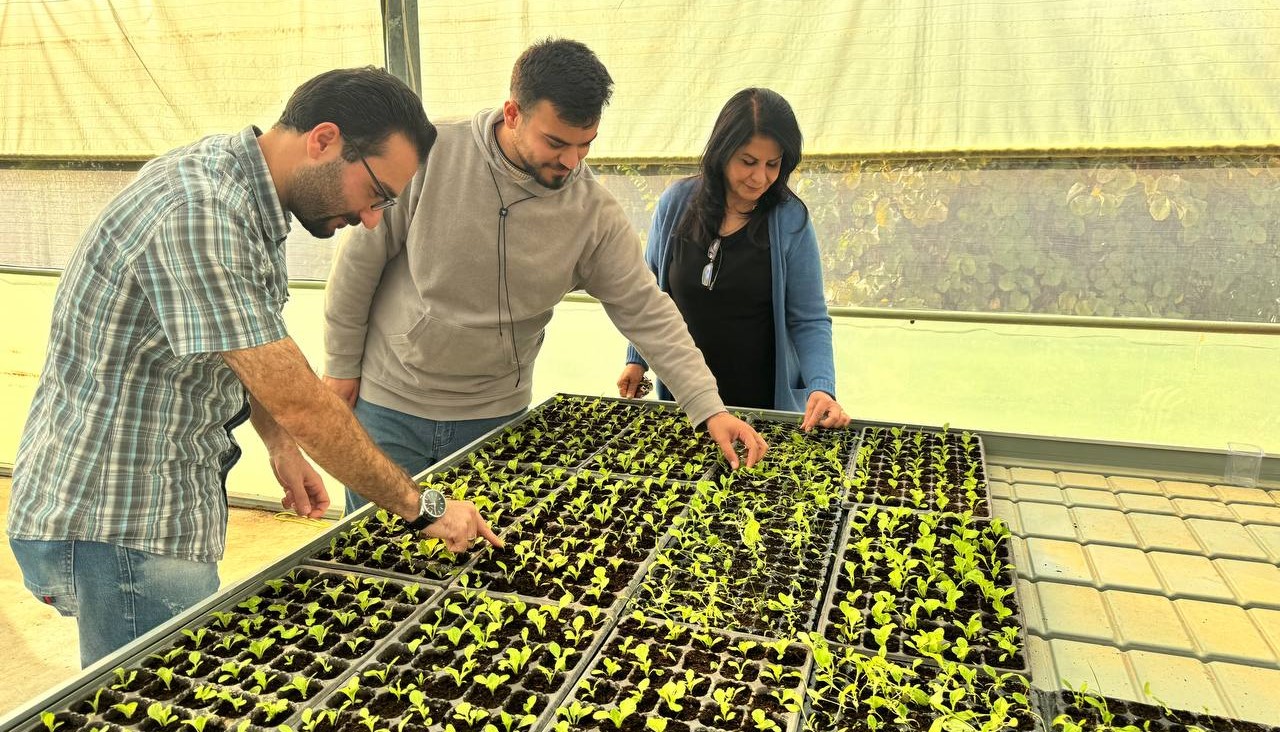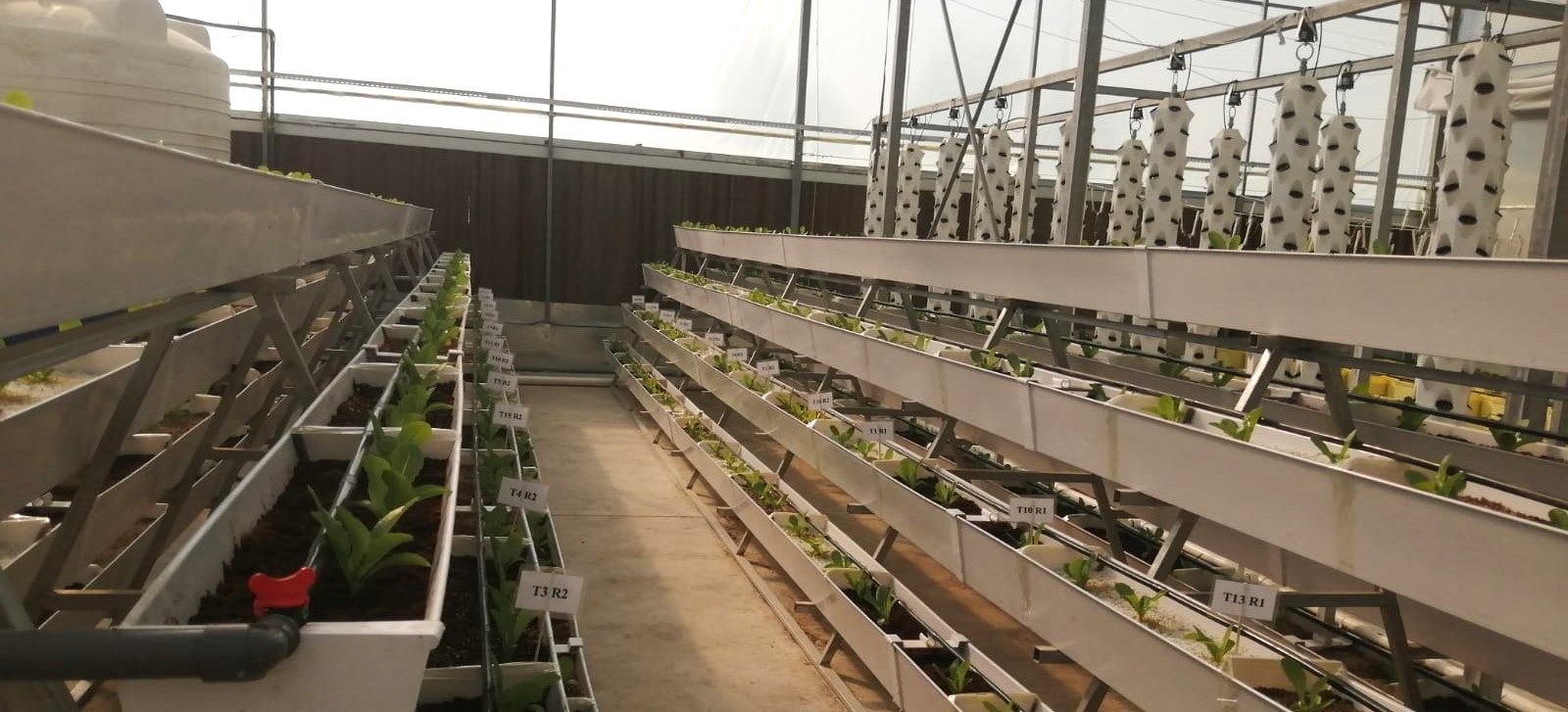
According to the new irrigation system, the production of one kilogram of tomatoes requires only half a liter of water, while the classic method of farming require about seven liters.
Hydroponics is based on growing agricultural plants without the use of soil. These are methods of growing plants either on a substrate or in an aqueous medium with bare root, says the United Nations Food and Agriculture Organization FAO.
Non-circulating hydroponic methods, importantly, do not require electricity or a pump.
The idea of creating and installing this system is due to the fact that in the Kurdistan Region of Iraq KRI, especially in the summer season, there is a lack of water and soil problems for farmers to irrigate agricultural products,” said Sherko Ahmed, representative of the Vim Foundation Hydroponic Project.
The biggest benefits are a 90 percent reduction in water consumption and columnar planting, which gives farmers more products in a smaller area.
The system is relatively new to the Kurdistan Region and Iraq, the VIM Foundation, in the framework of a project in coordination with University of Sulaimaniyah, to serve as an educational and research center for students, farmers and local centers in the university.
Agriculture is the largest consumer of water, according to the UN. While more than 2.6 billion people depend directly on the sector worldwide, it is also facing problems, with soil degradation affecting 52% of agricultural land.
In this system the soil is safe and problem-free.
A solution for water and soil
VIM's project to establish an irrigation system is initially from the university and hopes to be practiced by students in the future and encourage farmers to rely on it in agriculture.
Ahmad says that in addition to preventing water wastage, another importance of the system is that the soil is safe and problem-free. "There are fewer problems and fewer pests hit the crops.”
The VIM Foundation wants to make the project more familiar to farmers through training for farmers and is currently working on a booklet on the project, which explains all about the system.
“In this system, the soil is not used for agricultural production, only through water or through the use of clay substitutes such as coco peat and perlite... The system is controlled, neither the soil is affected by pests nor the crop is infested,” supervisor of the project said.
According to official figures, more than 53% of the country's land is under threat of desertification, since Iraq is losing 100,000 acres annually, making it the fifth most affected area in the world, UN says.

A vertical sample of hydropnic farming in the University of Sulaimaniyah, 2024. Kochar Aziz
Salam Mahmoud, a lecturer in the horticulture department of the College of Agricultural Engineering Sciences of Sulaimaniyah University, said, “Planting in soil has many problems, such as diseases and then transferred to plants, very problematic feature of classic farming.”
“Countries who lost agricultural lands can use this new system,” he added
Mahmoud says hydroponics is not new in the world and some countries rely on it to maintain food security, but it is new to the KRI.
About 70% of the world's water goes to irrigation, while 40% of the world's population suffers from water scarcity, according to UN figures.
“This system (irrigation) is very good for reducing water wastage, avoiding diseases in crops and increasing products,” says Fenik Abubakir, an agricultural engineer. “Besides, there are no soil problems.”
Continuous cultivation
Shalaw Mohammed, an assistant agricultural engineer whose master's degree is about the hydroponics project, says, “The importance of this system is that it uses other mixtures instead of soil, which is cleaned and contains no harmful substances.
While the soil needs to be cleaned, it is infected every year by pests which is transmitted directly to the crops, causing problems.
“In this system, water use and waste are greatly reduced because it is a greenhouse, has less evaporation and requires less water,” Mohammed says.
Another advantage of aquaculture is that you can farm anywhere.
It is more productive, reduces water wastage and requires less area
The farmers in the KRI are not yet engaged in this system; However, it has been installed in several places by investors, including the new modern wholesale grocery in Erbil, which has had good outcome.
Hemn Sayed Murad, Director General of Agriculture in Erbil, said an investor has implemented this project in the new modern warehouse in Erbil.
“Compared to the old system, it has been very good because it is more productive, reduces water wastage and requires less area,” Murad said.
The UN is helping farmers in some Iraqi provinces to install the system in the form of small and individual projects.
Drought and desertification destroy 12 million hectares of land annually that could have been used to produce 20 million tons of wheat.
Abbas Ali, an expert in water and hydrogeology, says aquaculture is to reduce the amount of water used in agricultural products.

Sample of farming per the hydropincs agriculture in the University of Sulaimaniyah, 2024. KirkukNow
Farmers reluctant of new system
“We suffer from water shortage in summer to irrigate our crops. If there is a good system to solve the problem of water shortage and increase our production and be experts in the system, of course we will use it,” says Jihad Sabri, a farmer from Bradost of Erbil. He is not aware of the hydroponic farming.
There is no year passes in Iraq without water shortages and the threat of drought for most farmers.
Mohammed Kamal, a farmer in Khiwata village of Sharbazher district of Sulaymaniyh Northern Province, said that in 2021 he planted five donums (0,5 hectare) of land with pumpkins and gave up when it was ripe, there was no water for irrigation so he quit. “Later I searched on the ewb for alternatives. I found out hydroponics. Now I know all about it, but the cost is too much for me to afford and I cannot use it.”
He is waiting for the government and the Ministry of Agriculture initiative enabling him to use the new system.
Hydroponics is the incorporation of technology into agricultural management practices for the production of year-round vegetables, cucumbers, tomatoes and zucchini.
Halkawt Abdulrahman, Director General of Horticulture, Forestry and Fisheries at the Ministry of Agriculture and Water Resources, said the system provides proper environment for the seeds.
“Irrigation and nutrition is via computer since it is a completely managed system.”
If five tons of cucumbers are produced per donum in the old system, 50 tons will be produced in this system
In a hydroponic system, the soil and air are standard, enough water is given to the crop, and the production is ten times as much as in the old system.
If farming per the old method requires one liter of water per day, 10% is required in drip systems, 90% less in hydroponic systems.
According to Abdulrahman, the hydroponic system requires less human capital, but requires intensive and continuous monitoring through technology.
"With this system, a staff of four people can cultivate several acres of land, but should not be left for an hour and needs round the clock power.”
The cost is a challenge
The challenge of any irrigation project is related to the financial resources of farmers, not everyone can afford it, and the cost is high compared to other common methods of agriculture.
"This system is more expensive than other systems and our farmers are not familiar with it and are not ready to give up their land," explained the supervisor of hydroponics project by VIM foundation.

In the face of these obstacles, Fenik Abubakir suggests that the private sector or the government should establish the system itself, because it is expensive and farmers will not give up their agricultural land.
The Ministry of Agriculture and Water Resources has opened courses and trainings for several farmers with the Horticulture Development Program in Iraq with the assistance of the Dutch government, on the use of hydroponics system.
"Due to the financial crisis, the Ministry of Agriculture itself does not have any hydroponic system projects, but there are a couple of projects run by the private sector," Abubakir said. “We can customs-exempt any goods imported for the installation of this system.”
The KRI’s territory is still fertile; If a farmer converts an acre of land to hydroponics, he has to spend about $25,000, usable for 50 years with ten times higher productivity while per the classic method farmers need only seeds, less expenses.
The professor of Sulaimaniyah University believes that the government should facilitate farmers to head towards hydroponics, directly by the government or through the private sector.
“The farmer himself cannot use this system and it is very expensive.” Mahmoud said.
*This story has been produced within the framework of the program to expand the role of women journalists in environmental coverage, by KirkukNow Media Outlet and financially supported by the Ministry of Foreign Affairs of the Federal Republic of Germany.